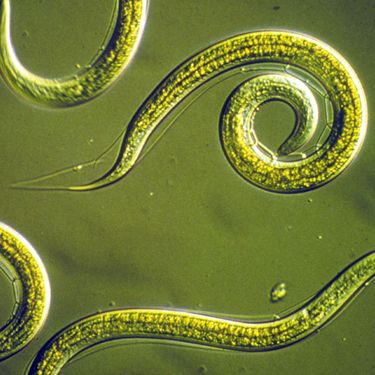Michael Hendricks: Integrating action and perception in a small nervous system

Theme:
roundworms
Tags:
nematodesmammals
What:
Talk
When:
2:00 PM, Wednesday 27 Jun 2018
(1 hour 30 minutes)
Where:
Université du Québec à Montréal
- DS-R510

Michael Hendricks (Speaker)
Professor McGill University
Professor McGill University

Jonathan Birch (Moderator)
London School of Economics
London School of Economics
Nematodes (roundworms) are separated from mammals by 600 million years of evolution and have major differences in the organization of their nervous system. They are also extraordinarily successful—4 out of 5 animals on Earth are nematodes. Despite possessing a brain many orders of magnitude smaller than that of vertebrates, they have been able to solve the fundamental behavioural problems of survival and reproduction.Caenorhabditis elegans has just 302 neurons, but can explore, learn, avoid pathogens and predators, and mate. It inhabits a sensory world where our basic intuitions about modalities and representations break down. Even so, fundamental circuits related to self-monitoring and egocentric representations of behaviour contribute to sensory processing, suggesting a deep origin for the types of feedback and internal representations that are though to give rise to awareness and the complex cognitive abilities of larger animals.
Hendricks, M., Ha, H., Maffey, N., & Zhang, Y. (2012). Compartmentalized calcium dynamics in a C. elegans interneuron encode head movement. Nature, 487(7405), 99-103.
Bargmann, C. I., & Marder, E. (2013). From the connectome to brain function. Nature Methods, 10(6), 483-490.

